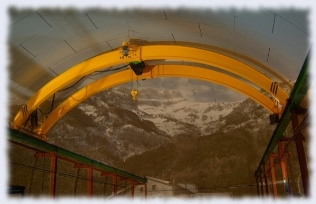Alejandro ALGORA
(IFIC (CSIC-Uni. Valencia))
The study of (p, gamma) and (alpha, gamma) reactions is fundamental for the understanding of many stellar nucleosynthesis processes. Conventionally several gamma detection techniques are used for measurements of radiative capture cross-sections. One possibility is the use of the activation technique. Other alternatives involve the direct detection of gamma rays emitted of the final nucleus...
Prof.
Cristiana Oprea
(JINR)
Cross sections of neutron reactions in S-Cl-Ar region in the s-process of nucleosynthesis
Mr
Federico Ferraro
(INFN - National Institute for Nuclear Physics)
The $^{22}\mathrm{Ne}(p,\gamma)^{23}\mathrm{Na}$ reaction takes part in the NeNa cycle of hydrogen burning, influencing the production of elements between $^{20}\mathrm{Ne}$ and $^{27}\mathrm{Al}$ in red giant stars, asymptotic giant stars, classical novae and type Ia supernovae.
The $^{22}\mathrm{Ne}(p,\gamma)^{23}\mathrm{Na}$ reaction rate is very uncertain because of a large number of...
Teresa Kurtukian Nieto
(Centre National de la Recherche Scientifique (FR))
The heavy ion fusion reaction 16O+ 16O is an important reaction in nuclear astrophysics since it influences not only the nucleosynthesis but also the subsequent stellar evolution [1]. At present, this reaction has only been measured down to energies around 6.5 MeV that are higher than the energies of astrophysical interest. The main reasons for this are limitations in...
Alan Michael Howard
(Aarhus University (DK))
Observation of $^{26}$Al in the galactic medium, via decay of its daughter nucleus $^{26}$Mg, has provided direct evidence for ongoing nucleosynthesis in the galaxy [1]. While the main sites for $^{26}$Al production are still uncertain, the C/Ne convective shell within massive stars is a prime candidate. Large-scale network calculations have been reported which assess the impact of various...
Luis M Fraile
(Universidad Complutense (ES))
The direct measurement of reaction cross-sections of stellar nuclear reactions is hindered by experimental difficulties, particularly the very small cross-section
values at the Gamow peak and the high background arising from the cosmic ray interactions. At the Earth's surface the low signal to background ratio can be
overcome up to a certain limit by active and passive shielding and by a...
